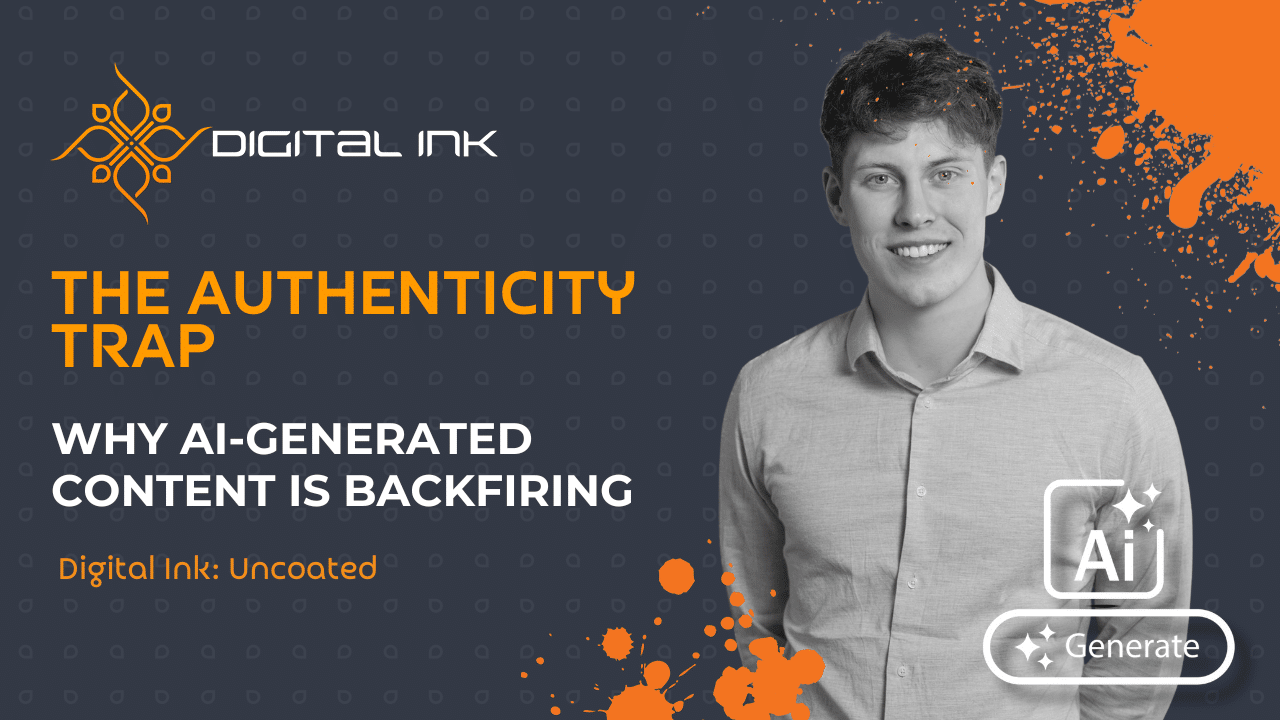
By Harrison Bailey, Founder of The Smart Elephant & Director of AI at Digital Ink
We’re living through a fascinating paradox. Just as AI tools become more sophisticated and accessible, we’re seeing a growing backlash against their use in business communications. The very efficiency that makes AI attractive is creating new problems that threaten the foundations of how we build relationships and trust.
As someone who’s spent years bridging the gap between cutting-edge AI capabilities and real business needs, I’ve witnessed this tension first-hand. The same technology that can revolutionise how we work is also threatening to strip away the very human elements that make business relationships meaningful.
Across LinkedIn, X, and internal company communications, there’s a palpable shift happening. People are becoming more adept at identifying AI-generated content, and they are not pleased with what they see. The tell-tale signs are everywhere: overly polished prose, generic enthusiasm, and that unmistakable lack of human quirks that make communication feel real.
Search algorithms are catching on, too. Google and other platforms are starting to penalise obvious AI content, recognising that users want authentic, valuable insights, not recycled variations of the exact optimised phrases.
But here’s what’s more concerning: the creep into internal communications.
Imagine asking a teammate a question about a project, receiving what seems like a thoughtful response, only to realize later it was entirely AI-generated. How does that change your relationship? How does it affect trust within your organization?
This isn’t hypothetical. It’s happening right now in companies everywhere. Employees are using AI to respond to internal emails, Slack messages, and even performance reviews. The efficiency gains are real, but so are the unintended consequences.
When we outsource our internal communications to AI, we risk:
• Eroding workplace relationships
• Creating a culture of surface-level interactions
• Losing the authentic dialogue that drives innovation
• Building teams that don’t really know each other
Here’s the irony: in our rush to be more efficient, we’re devaluing the very thing that makes businesses successful genuine human connection. Years of building brand authenticity, unique voice, and trusted relationships can be undermined by a few months of lazy AI adoption.
The companies and individuals who’ve spent decades cultivating distinctive voices and authentic relationships are watching their competitive advantage erode as they blend into the AI-generated noise.
The solution isn’t to abandon AI that would be like ignoring the internet in 1995. Instead, we need to get smarter about how we use it.
Through my work at The Smart Elephant, connecting students with real-world AI projects, I’ve seen what happens when bright minds approach AI thoughtfully versus when they treat it as a shortcut. The difference is stark.
The most successful approach treats AI as a thinking partner, not a replacement for human judgment. Use AI to:
• Overcome writer’s block
• Structure complex ideas
• Refine messaging for clarity
• Generate initial drafts for further development
But maintain human control over:
• Final voice and tone
• Personal anecdotes and experiences
• Emotional intelligence and empathy
•Strategic decision-making
When I help businesses implement AI solutions, I always emphasize this balance. Yes, AI can analyse data faster than any human, but it can’t replace the insight that comes from actually understanding your customers, your market, and your unique value proposition.
As one LinkedIn user recently noted, “In 1000 days, the only difference maker in our businesses versus the competition will be the people we have empowered to amplify their roles through AI.”
This feels exactly right. The winners won’t be those who avoid AI or those who blindly embrace it. They’ll be the ones who master the balance leveraging AI’s capabilities while preserving what makes them distinctly human.
The challenge now is establishing clear boundaries. Where is AI-assistance appropriate, and where does it cross into authenticity theft?
External communications: Use AI for research, structure, and initial drafts, but ensure the final voice is unmistakably yours.
Internal communications: Be transparent about AI use, especially in important discussions. Your colleagues deserve to know when they’re interacting with you versus a tool.
Leadership communications: Maintain the highest standards of authenticity. People follow leaders, not algorithms.
We’re at a crossroads. We can either sleepwalk into a future where all business communication sounds the same, or we can intentionally craft an approach that amplifies human capabilities while preserving what makes us unique.
Many businesses see AI as complicated, expensive, and definitely outside their comfort zone but it doesn’t have to be that way. The key is finding the right balance between leveraging AI’s capabilities and maintaining the human touch that builds genuine relationships.
The companies that figure this out will own the next decade. Those that don’t will become indistinguishable background noise in a world increasingly hungry for authentic connection.
The question isn’t whether to use AI it’s whether you’ll use it wisely enough to stay human.
Harrison Bailey is the Founder of The Smart Elephant and Director of AI at DigitalInk, where he helps businesses navigate the intersection of AI innovation and authentic communication. When he’s not working on AI projects, you can find him on the football pitch, in the gym, or planning his next adventure.